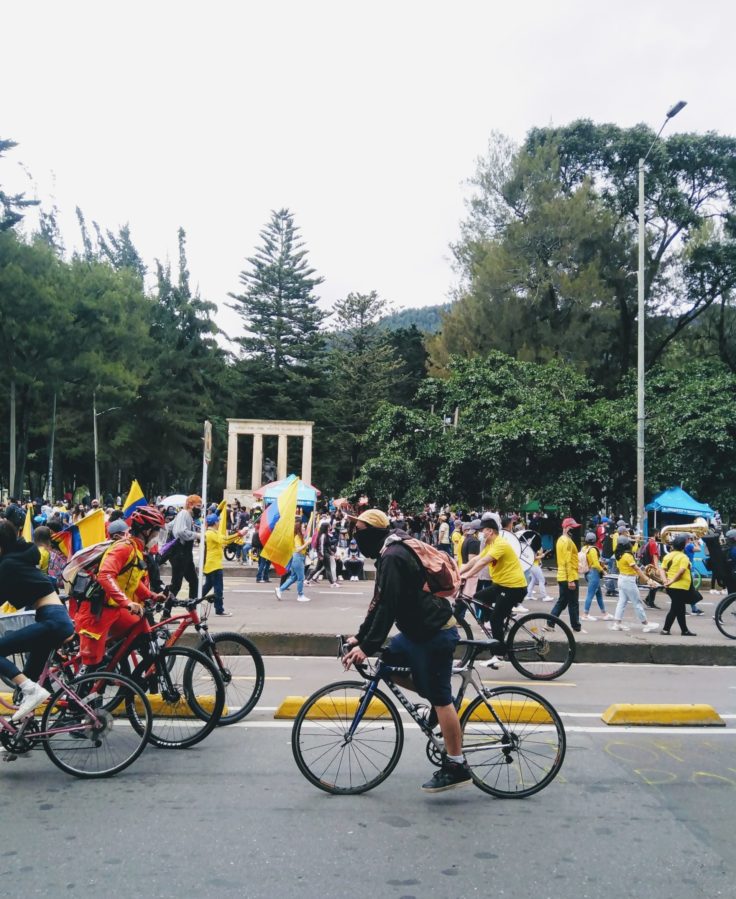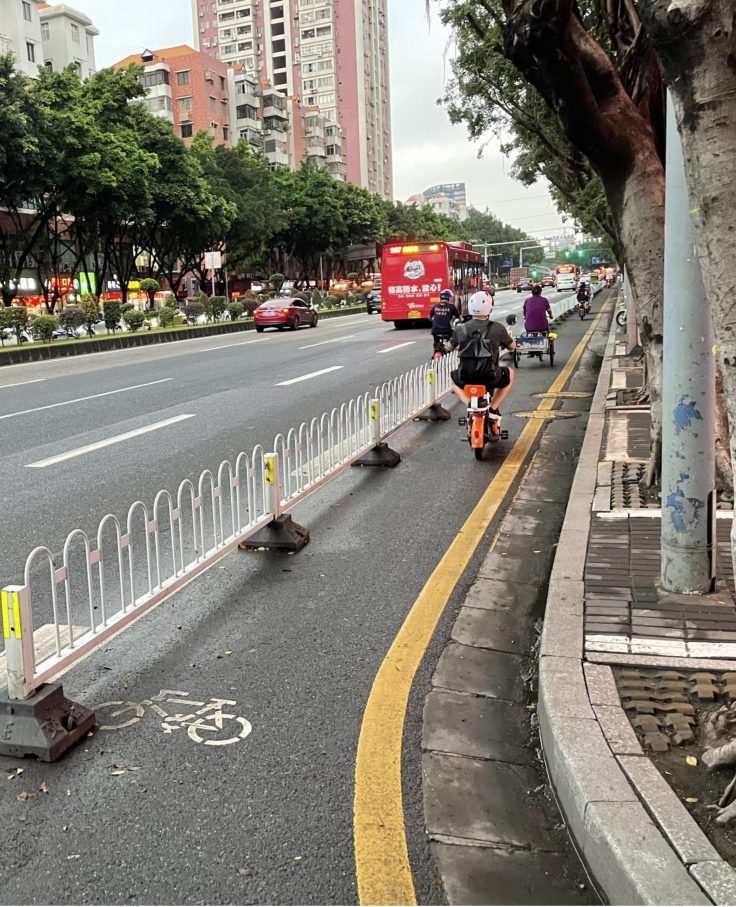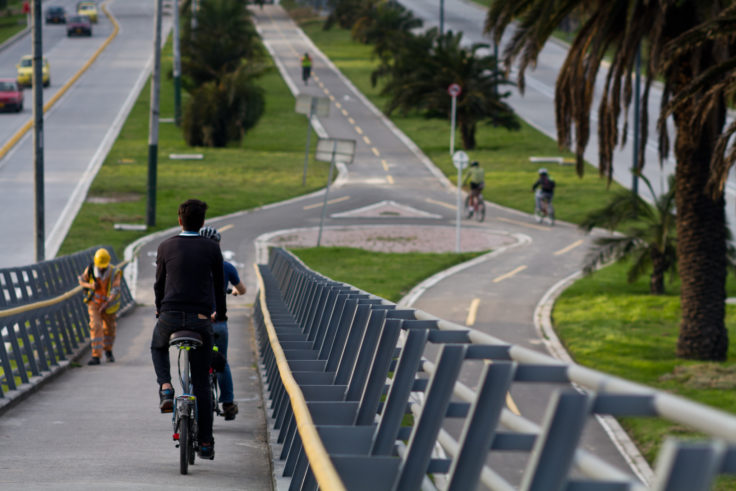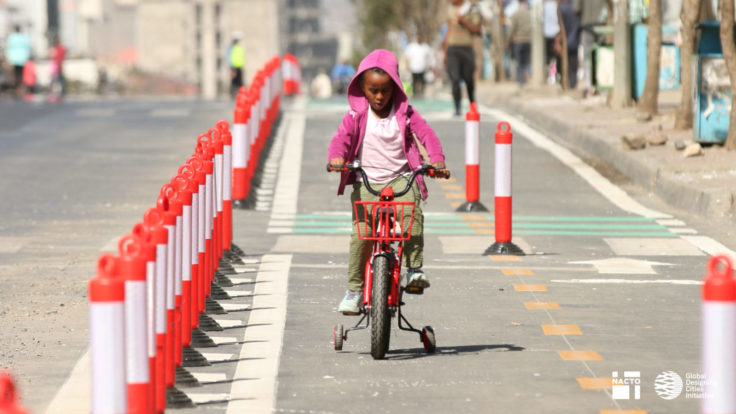October 24, 2022
Protected Cycle Lane Networks Can Make a Big Impact on Climate Change
Amongst cities in middle-income countries, Bogotá, Colombia and Guangzhou, China are two that may seem to be vastly different.
Nevertheless, both cities are united in facing an urgent challenge: growing greenhouse gas (GHG) emissions resulting from, among other sectors, their urban transport systems. Bogotá’s cars and vehicles emit a large share of the 14,000 tonnes of carbon entering the city’s atmosphere daily from its nearly 8 million inhabitants. Guangzhou, with a population of over 15 million, was named as the city with the second highest carbon footprint in the world in 2018. At the same time, both cities are also setting an important example for their peers in their approach to one sustainable, low-carbon form of transport — cycling. As both cities seek to drastically reduce their emissions and tackle climate change, they can also offer valuable lessons for municipalities looking to make cycling an essential mode of transport.
Bogotá and Guangzhou both have histories of support and advocacy around urban cycling — what stands out most is that they each also have some of the world’s most extensive networks of protected bicycle lanes. For these cities and their peers in low- and middle-income countries, prioritizing investments and policies that expand cycling is the key to shifting people from private vehicles towards transport options that are better for the environment. By examining the climate impacts of Bogotá and Guangzhou’s protected cycle lane networks, valuable lessons can be drawn for urban decision-makers seeking to promote cycling in their own cities.
Bogotá (left) and Guangzhou (right) have extensive networks of protected cycle lanes that offer key lessons for other cities looking to reduce emissions by promoting cycling.


In the new report Protected Bicycle Lanes Protect the Climate, developed by ITDP’s Cycling Cities campaign with support from the FIA Foundation, research finds that networks of protected bicycle lanes in low- and middle-income cities have significant potential to reduce GHG emissions, lower transport costs, and prevent premature road fatalities in a highly cost-effective way. In studying the impacts of the existing networks in Bogotá and Guangzhou, this study provides what may be the first-ever empirical measure of GHG reductions from networks of protected bicycle lanes in low- and middle-income countries by calculating the increase in cycling attributable to those networks.
Connected networks of physically-protected bicycle lanes, rather than individual or unprotected lanes or other policy measures, are generally regarded as the most important factor in promoting cycling. Research has shown the positive impacts of increasing cycling, but there has been little research that directly links bicycling infrastructure to reductions in GHG emissions, with a particular lack of studies in low- and middle-income countries. There has also been a research gap in quantifying how protected bicycle lane networks shift driving trips to bicycle trips, and the related reductions in emissions — a gap that this report seeks to address.

The climate benefits of building protected cycle lane networks are great while the costs are low.
Using cyclist counts and intercept surveys, combined with lifecycle emission factors for various modes, this report estimates that these networks prevent the emission of about 22,000 tonnes of CO2-eq per year in Bogotá and 16,000 in Guangzhou. Considering the low cost of building protected bicycle lanes, this equates to roughly 10 times as much GHG reduction per dollar spent on infrastructure for essential, but costlier, metro rail systems.
Protected bicycle lane networks also provide a number of other social and economic benefits. People who can bicycle instead of driving or riding transit save time and money on every trip, for an estimated total economic benefit of 80 million USD/year in Bogotá and 30 million USD/year in Guangzhou. Bicycling is also an important form of physical exercise; bicycle lane networks have benefits for public health as well as the economy: we estimate that they prevent about 300 premature deaths every year in Bogotá and 50 in Guangzhou.
Unfortunately, bicycle lanes have often not been treated as major pieces of urban infrastructure in the same way as metros, bus rapid transit systems, and highways. The lessons drawn from Bogotá and Guangzhou in this report demonstrate that networks of protected bicycle lanes should be considered essential — they are efficient, cost-effective, and easy-to-build investments for both protecting the climate and increasing transport efficiency. Local governments and decision-makers urgently need to recognize that investing in these networks establishes cycling as a safe and affordable means of transport that can shift more people away from driving, especially at this crucial juncture in the fight against climate change.

Using the findings and analysis from this report, ITDP also developed a free, publicly-available modeling tool to download, which helps predict the GHG reductions that can be expected from planned bicycle lane networks. This tool takes only a few minutes to use and requires little technical knowledge and can produce context-sensitive projections of the climate impacts of bicycle lane networks in other cities. Development banks, climate funders, and city and national governments should take note — the climate benefits of protected cycle lane networks are great while the costs are low, and it is time to invest and build more of them worldwide.
Download the Protected Bicycle Lanes Protect the Climate Report >>
Join the Protected Bicycle Lanes Protect the Climate – Evidence from Cities webinar >>
